Introduction 简介
With healthy budgets and creativity among brands and agencies on the rise, the Chinese commercial environment is ripe with opportunity and increasing numbers of postproduction studios are entering the market to capitalize. However, those companies should be aware that operating in China comes with significant challenges.
For this three part series, SHP+ interviewed a selection of China’s most experienced commercial postproduction leaders to discuss the industry in 2015 and what it takes to thrive in the China market. International or foreign-managed are dominating the market and provided our focus for the series, though we spoke with a number of Chinese practitioners and studio bosses along the way. Since SHP+ is focused on the craft and creativity in Chinese advertising, our primary interest was in postproduction for commercial projects, with movie VFX referenced primarily in its relationship with the commercial work.
Included throughout the article is a selection of examples of recent postproduction work done in China.
随着各个品牌和机构的预算越来越稳健,创意越来越多,中国商业环境所孕育的机会已经成熟。越来越多的后期制作公司进军中国市场赚取资本。然而,他们应该意识到,在中国运营公司也伴随着巨大的挑战。
SHP+采访了一些在中国最富有经验的商业后期制作公司的领袖,探讨2015年后期制作产业的格局以及如何能够在中国市场蓬勃发展,我们将文章分为 三部分呈现给大家。虽然我们也采访了一些中国的从业人员和工作室老板,但这次讨论的一系列重点均来自于国际公司或是外国人管理的公司,因为他们是中国市场 的主导者。SHP+关注的重点是中国广告业的技巧和创意,主要感兴趣的是商业项目的后期制作,同时也探讨了电影特效和商业作品之间的主要关系。
文章囊括了我们所精选的近期中国后期制作的一些作品实例
Part Two 第二章
Clients 客户篇
“Schedules tend to be arbitrary. You look at the project and think ‘you want to do all of this in that amount of time?!”
– Wayne England, Creative Director, VFX Supervisor & Producer, Phenom Films
“日程一般都是随意定的。初步看看项目,然后你就想,要在某个时间之内把所有工作都做完?!”
– Wayne England,天工异彩影视创意总监、视效总监兼制片人
Highly demanding postproduction scheduling, referred to as the ‘China schedule’ by studio bosses, remains a major challenge of operating in China. MPC Shanghai GM Steven Marolho explains, “It’s a constant that schedules are either unrealistic or formulaic in nature, one week, small job; two weeks, middle job; big job three to three-and-a-half weeks. Too often schedules are not based on the actual post workload required. Then, when you do get longer post time, the job expectations are so big and crazy that you’re faced with exactly the same situation.”
高度紧张的后期制作日程通常被制作公司的老板称为‘中国式制作日程’,这一点仍旧是在中国开展业务面临的重大挑战。MPC上海总经理Steven Marolho解释说,“如果是小型项目,客户和制作公司约定的日程是一周完成;中型项目的话,两周完成;大型项目的话,三周到三周半完成。如果项目非常复杂的话,那可就有得做了。偶尔也会给你两三个月的时间,但这通常都是那些工程量巨大,令人抓狂的项目,多给你点时间,是为了让你心里更有底。”
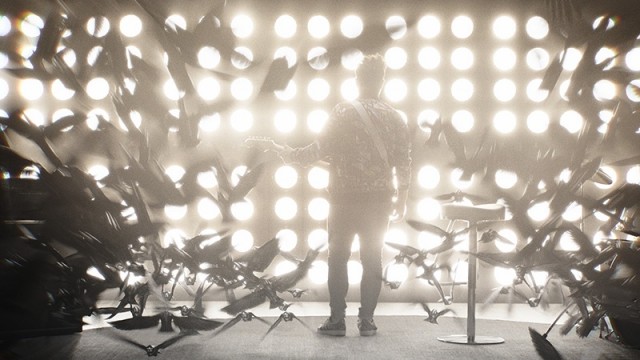
Fin Design + Effects for Adidas. Images courtesy of Fin Design + Effects | Fin Design + Effects制作的阿迪达斯广告。图片由Fin Design + Effects提供
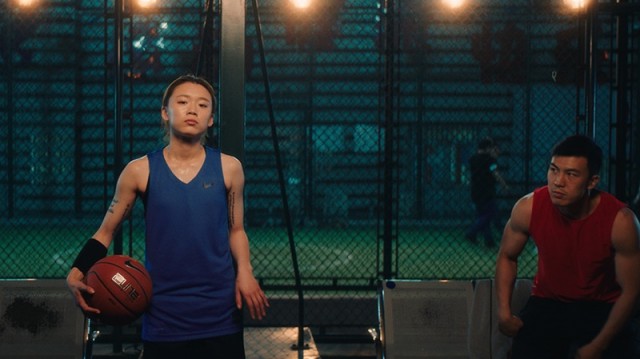
Fin Design + Effects for Nike | Fin Design + Effects制作的耐克广告

Fin Design + Effects for Mercedes | Fin Design + Effects制作的奔驰汽车广告
Inexperience & Expectations 经验不足&期望过高
Part of the reason may be that China’s visual effects industry was virtually non-existent until the turn of the century. The majority of local production company producers, not to mention agency and client planners, are relatively new to the business and few understand the complex process of creating visual effects.
之所以有这样的日程安排,部分原因可能是由于中国的视效行业在世纪之交之前事实上并不存在。暂且不说广告机构和客户策划人员,就绝大多数本土制作公司而言,这块业务对他们来讲,相对陌生,几乎没有人懂得创作视觉特效的复杂流程。
This inexperience, coupled with stuttering communication between production company, agency, client and post house has been and continues to be felt in the scheduling of commercial production.
经验不足,以及制作公司、广告机构、客户、后期制作公司之间的沟通不畅,这些特点在商业制作日程规划的过程中一直都很明显,而且以后人们还会切实体会到。
Clients enter into projects with unrealistic expectations for what can be achieved within the timeframe, often providing Hollywood blockbuster effects as reference and expecting a similar outcome in less than a month. Typically the post house will not have been brought in early enough to provide extra guidance.
对于一个项目在一定的时间期限内到底能够达到什么样的效果,客户的预期往往不切实际,他们总会拿好莱坞大片的特效做参考,希望在一个月内也能做出同样的效果。而后期制作公司往往都没能及早参与进来,无法提供更多的指导。
Once the post house is involved in the process, a crucial challenge is managing expectations while maintaining client enthusiasm. Studios must be especially smart about when to show clients work in progress. Show it too early and inexperienced clients can panic that it doesn’t appear finished. Show it too late however, and posthouses leave themselves open for clients to demand big, unrealistic changes that are impossible at that advanced stage.
一旦后期制作公司参与到流程中来,他们面临的关键挑战就是如何应对客户的预期,同时又能保持客户的热情。到底什么时候可以把制作进展展示给客户,这一点制作公司尤其要掌握好火候。如果时间过早,那些没经验的客户看到尚未完成的作品往往都会惊慌失措。但是如果时间太晚的话,客户要是要求一些不切实际大的变动的话,那后期制作公司在这个阶段根本无法满足他们的要求。
Sam Khorshid, VFX Supervisor for Phenom Films believes the Chinese commercial industry will only truly compete on the world stage once experience amongst client, agency and production company planners improves, “90% of VFX artists here are as good as the guys in LA, but if the planning isn’t solid, if the budget or the time to execute isn’t enough it’s never going reach that same level of quality.”
天工异彩视效总监Sam Khorshid认为,只有当客户、广告机构、制作公司策划者之间积累更多经验的时候,中国的广告行业才能真正地在世界舞台上竞争,“国内90%的特效师其实跟洛杉矶水平相当,但是如果规划做的不牢固,预算和时间都不足的话,那作品永远也达不到人家一样的水平。”

Image Unit for Mercedes. Images courtesy of Image Unit. | Image Unit制作的奔驰汽车广告。图片由Image Unit提供。


Image Unit for Mazda | Image Unit制作的马自达汽车广告
Indecision & Revisions 犹豫不决&反复修改
Contributing to the problem is the notorious difficulty in having clients make decisions. This may be attributed to the hierarchical structure of most Chinese companies, whereby all decisions, no matter how minor, must pass through a complex approval process by individuals at each level of the company, before being ratified by one company leader. Marcus Roth, GM of Shanghai’s Image Unit, outlined the issue, “It’s very unclear who can make a decision. You usually you don’t have a single responsible person to sign off designs or production steps so you can proceed. It’s always a group of people. Often people within the group actually change during the process.”
客户做决定时异常艰难,这一点是人尽皆知的,这也是问题的原因之一。这可能是由于多数中国公司都存在人事等级制度,所有决策,无论大小,都要经过公司每个级别领导的复杂审批流程,最后还要有公司大领导的批准。上海Image Unit的总经理Marcus Roth列出了这个问题,“到底由谁来做决定往往不是很清晰。通常都不是由一个人来批准某项设计或是制作步骤,导致无法推进到下一步,通常都是一组几个人做决定。有时候还中途换人。”
As a result, campaigns often spend excessive time in discussion and ideas remain unclear in preproduction, leaving insufficient time for production and post. “Procrastination on decision-making hurts the production schedule,” explains Marolho, “We can’t afford to throw six people at a task for a week, only to later find it was a waste of time. The budgets aren’t there for that sort of trial and error. You need an approval as only then can you move on with confidence.”
由此就导致了大量的时间花费在讨论上,前期制作期间概念还没敲定,所以制作和后期没有足够多的时间。“做决策时的拖拖拉拉耽误了制作日程,” Marolho解释说,“我们不能先把六个人扔到一个项目上做了一周,然后发现白白浪费了时间,我们承担不起这样的代价。根本没有这样的预算让我们反复尝试,犯错再改。相反,如果事先想法就获批,我们就会充满信心向前推进。”
The outcome is intense time pressure. Traditionally, posthouses have born the brunt of the poor scheduling and procrastination. Particularly demanding for foreign post houses is local production companies blocking weekends as post workdays. Chinese production companies often prefer to work with Chinese post houses that are more amenable and accepting of unpaid overtime caused by poor planning.
这样就导致了时间紧迫,压力很大。按照传统,后期制作公司会想办法弥补制作周期不足还有拖拖拉拉带来的后果。对国外的后期制作公司来说,比较苛刻的是,国内的制作公司把周末也变成了后期制作的工作日。这样,国内的制作公司往往跟愿意找国内的后期制作公司合作 – 因为他们比较灵活,虽然前期规划不当,但是他们愿意额外加班,却又不拿薪水。

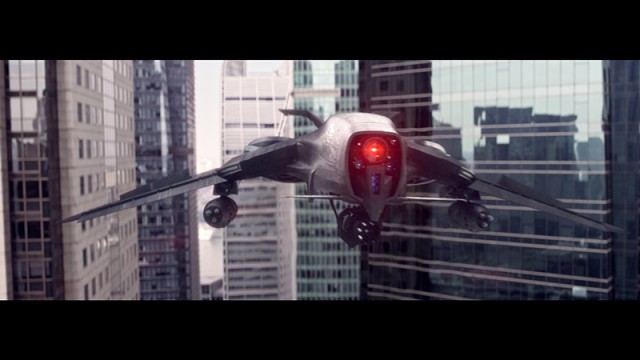
MPC Shanghai for Chang’An. Images courtesy of MPC | MPC上海制作的长安汽车广告。图片由MPC提供
Then there is the notorious whirlpool of endless, unpaid revisions and pushed deadlines. Roth explained, “you cannot prevent the problem of ongoing revisions without additional payments. If we say we won’t go on revising and demand that the client pays, the client will just not make the last payment.”
之后还有无穷无尽的反复修改,而且还不会额外支付费用,导致截止日期延后,国内这一点也是声名狼藉的。Roth解释说,“反复修改又不再付费,这种事情无法阻止。如果你告诉客户你不想修改,或者要求客户额外付费,那最后一笔费用客户就不会付给你了。”
One experienced VFX Supervisor (who preferred to remain unnamed) spoke in no uncertain terms about the problem, “Chinese clients say ‘I only have 100 shots and I have 1 million RMB.’ But later the 100 shots will turn into 200 and eventually 400. But the one million RMB budget will have shrunk to 600,000RMB. That’s guaranteed to occur with Chinese clients, even when they are good friends.”
一位颇有经验的视效总监(不愿透露姓名)十分明确的阐述了这个问题,“中国的客户会说‘我们只要100个镜头,我们有100万人民币。’但是之后100个镜头会变成200个,最终还会变成400个。但是原先的100万人民币的预算会缩减到60万。中国客户铁定会这样做,即使是好朋友之间。”
The reasons this is a standard business practice in China are manifold, but a key contributor is that clients often do not know what they want until they see it. Decisions come too late in production, if at all. Again, this is born out of the relative inexperience of brand marketers working in advertising production, and a general unfamiliarity with the creation process. Often compounding the problem is production companies failing to properly communicate the necessary schedule or stand up to the client in the face of their constant indecision.
为什么这样的处事方式成了中国的标准,原因有多重,但是关键因素是客户往往都不知道自己想要什么,除非他们看到了最终做出来的东西。制作中决策姗姗来迟 – 如果真有决策的话。这是由于品牌营销者在广告制作方面的经验相对不足造成的,一般他们对创作过程也不熟悉。而制作公司又不能正确地将必要的制作日程传达给客户,面对客户经常性的犹豫不决无法对抗,这些原因又使得问题更加恶化。


BaseFX for ThinkPad. Images courtesy of BaseFX | BaseFX 制作的ThinkPad广告。图片由BaseFX提供
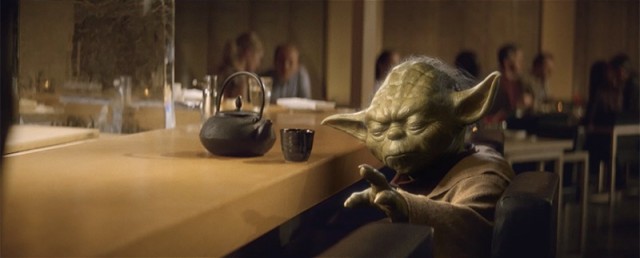
BaseFX for Vodafone | BaseFX制作的沃达丰广告
Roth explained that usually clients would rather accept lower quality than allow higher budget, “even if the budget is sufficient, they start revising at a late stage. You tell them it’s not possible to achieve the higher quality at that stage; there’s not enough render time or there will be compromises elsewhere, but they will accept that only to be able to constantly revise.”
Roth解释道,客户往往宁可将就低质量的作品,也不愿意增加预算,“即使预算充足,客户也只会在最后的阶段提出要求修改。如果你告诉客户在这个节骨眼上无法做出高水平的制作,来不及反复修改,否则就意味着其他地方无法做好,这种情况下,他们往往宁愿其他地方受到影响,只要能够满足他们反复修改的要求就行。”
Khorshid explained how Phenom fights against the dreaded late changes, “We protect ourselves by creating what I call ‘visual contracts’. They are dated, sent back and forth, we get confirmation from everybody on their side and get it involved in the contract. Sometimes it doesn’t work, but in general it has helped a lot.” Exhibition work is particularly preferable for post houses because the fixed date for the show makes endless revisions impossible.
Khorshid向我们解释了天工异彩如何对抗客户在很晚的阶段提出的这些令人讨厌的修改,“我们会做一份合同,我将其称为‘视觉合同’,以此保护自身利益。合同上标有日期,反反复复发给客户,让客户一方的每一个人都确认,把这一点也写到合同里。虽然有时候这种做法不奏效,但是整体而言还是对我们很有益处。” 后期制作公司尤其喜欢做展览类的项目,展览的日期是固定的,这样客户就不能没完没了的要求修改了。
To compound the frustration, Chinese clients are not noted for their loyalty to service providers. With a high turnover of staff within client companies, studios need to constantly work on relationship management. One key individual moving company can result in a lost client. Moreover, clients usually require the post house to pitch for every project, rather than rewarding a job well done with the next contract. Roth suggests this can catch foreign companies off-guard, “Companies entering the market are sometimes willing to lose money on jobs because they think the client will come back next time, but it doesn’t work like that.”
更令人抓狂的是,中国的客户不会死守着一个服务提供商。客户公司的人员流动频繁,制作公司还需要时不时就维护一下客户关系。一个关键人物辞职离开客户公司,制作公司可能就此失去这个客户。此外,针对每个项目,客户通常都要求后期制作公司给出方案,再决定用不用你,而不是由于这次制作公司做的很令人满意,直接就可以把下一个项目也交给你做。Roth表示这一点往往都让国外公司措手不及,“外国公司来到中国市场,有时候愿意做赔本的买卖,因为他们希望下次客户还会找他们,但是事实并不是这样的。”
Clients in China demand a greater degree of control and influence than they do in western markets, and all stages of production in the chain are subject to their whims. One of the most dangerous manifestations of their power is the common situation of payments being withheld for a year or more.
同西方相比,中国客户要求自身有更大的控制力和影响力,他们在每个制作阶段都有心血来潮的想法。这样的掌控往往让人感到很危险,最突出的表现之一就是付款会耽搁上一年甚至更久,这在中国是很常见的现象。
China is not a market to enter into lightly. It is therefore crucial to invest locally – in infrastructure, staff and building relationships – and have the flexibility to ride out the storms. Establishing a front office and planning to execute work through other studios worldwide is an extremely risky business model. Marolho puts it bluntly, “When you’re at the whims of people on the other side of the world, you’re not in control, and people don’t want to give their projects to people who aren’t in control. You need to have the potential to finish what you started in that shop, without Internet connectivity and time-zone reliance. There are only so many times you can say ‘we’re going to have to wait until he wakes up’. Clients don’t have that level of patience.” A number of international players have come and gone, having fallen prey to this misguided strategy.
打入中国市场并不容易。因此在本地进行投资非常重要 – 投资基础设施、人员、疏通关系 – 而且要灵活应变以便能够安然度过难关。在这设立一间办公室,把执行工作放到世界各地的工作室来完成,这是一种风险极高的商业模式。Marolho直言不讳,“如果你要受到世界另一端的人的随意摆弄,那事情就不在你的掌控之中,而且人们都不愿意把项目交给那些他们管控不了的人手中。工作一旦做起来就应该可以在本地完成,不用上网联系其他人,还要考虑时差。你不能总是说‘我们可以等他睡醒了再说’。客户可没那么有耐心。”很多国际公司来了又撤出,因为他们受到了这种战略的误导。


Post Production Office for Red Bull. Images courtesy of Red Bull | PO朝霆制作的红牛广告。图片由红牛提供
Positive Evolution 积极的变化
In spite of the difficulties, there is a general feeling that things are getting better. Pixomondo Beijing EP and Asia COO Jan Heinze, summed up, “It’s changing rapidly. It’s exciting to see the development in such a short timeframe, to see how much our clients improved.”
虽然困难重重,但是整体而言情况还是越来越好。Pixomondo北京执行制片人兼亚洲区首席运营官Jan Heinze概括说,“情况变化迅速。我们很高兴地看到在这么短的时间就发生了这么多变化,客户也在不断改进。”
The manner in which production companies handle projects is improving with clients becoming more respectful of the fact that they need to pay for extra work. The notoriously long China working days and weekend are coming more into line with international standard ten-hour working days. Roth outlined the change, “If [clients] make a schedule, and it’s totally unrealistic, you can tell them and they accept it. They are more flexible, at least in the early stages.”
随着客户越来越尊重制作公司,愿意支付额外的费用,制作公司处理项目的方式也有所改进。中国原本臭名昭著的工作日和周末加班的情况现在也改善了,逐渐趋向于国际标准的工作日10小时制度。Roth解释了这种变化,“如果(客户)做出的制作日程完全不切实际,你可以告诉他们,他们会接受的。客户现在更变通,起码在初期阶段是这样的。”
International post houses are playing their role in the evolution, bringing experience and expertise, acting in some cases as creative partners to agencies and brands, to help educate, inspire and plan from an earlier stage in the process.
国际后期制作公司在这种转变中也起着相应的作用,他们把经验和知识引入到中国,有时候充当着广告机构和品牌的创意合作伙伴,培养并激励客户在早期阶段就开始进行规划。
Heinze explained how this model differs from the studio-client relationship in the US, “Here we are much more involved and have way more influence. Clients come to us for creative solutions and to learn the processes. We complement them with our skills. They notify us early if they have initial ideas. If it hasn’t been done before, they ask ‘can we do that?’ and we try to work out with them how. We’re happy to consult, even if it’s for free. Clients really value it if you can help them to push ideas further.”
Heinze解释了这种模式和美国的工作室与客户之间关系的不同之处,“我们的参与度更高,对客户的影响也更大。客户向我们寻求创意解决方案,向我们学习工作流程。我们向他们提供我们的技能。他们会尽早把自己的想法告诉我们。如果之前未能将想法告知我们,后续也会征求我们的意见,问问我们能不能那样做,我们会试图和他们一起解决问题。我们很乐意提供咨询,即使是免费的。如果你真能帮助客户推进他们的想法,那他们真的会非常重视你。”
The more world-class work post houses can help execute, the more examples they will have to show, giving clients an idea in advance of what they are looking for. Marolho explains, “When people see it they say, ‘great, we love that, we want that’ and we can explain how we did it.”
世界级的后期制作公司越是想要更多地帮助客户执行他们的想法,他们就越要给客户展示更多的例子,让客户提前就知道自己到底想要什么。Marolho解释说,“如果客户看到我们的某个范例,说‘太棒了,我们很喜欢,我们就要这样的’,那我们就可以给他们解释我们是怎么做到的了。”
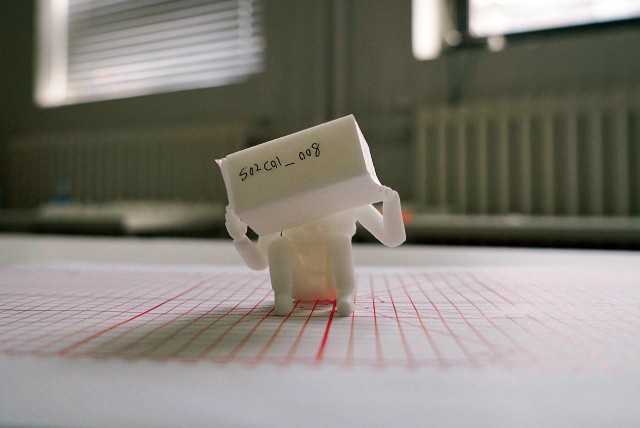
Pixomondo for Zihua. Images courtesy of Pixomondo | Pixomondo制作的自化创意广告。图片由Pixomondo提供
The final installment, Commercial Postproduction in China, Part Three: Talent, investigating the artist shortage ‘crisis’ and manifold resulting issues, is coming next week.
下周我们将为您呈现最后一部分,中国商业化后期制作格局,第三部分:人才,探究人才匮乏‘危机’以及由此导致的多重结果。
Commercial Postproduction in China – Part One: Landscape
Contributors 参与者
 Jan Heinze
Jan Heinze
Executive Producer & COO Asia, Pixomondo | Pixomondo 亚洲区执行制片人兼首席运营官
Jan Heinze joined Pixomondo in Germany in 2000 and played a key role in the establishment of their Beijing studio in 2009. He has since been undertaking strategic and operational management for the company in Asia, with a focus on the Chinese market, taking on roles including business development, facility development and integration, project management and intercultural communication.
Jan Heinze于2000年加入Pixomondo德国工作室,并且是促成2009年北京工作室成立的关键力量。此后便一直负责亚洲区的战略与运营管理,其主要工作重点是针对中国市场,承担的责任包括:商业开发、设备开发和集成、项目管理和跨文化沟通。
Pixomondo is an international creative design, media production and visual effects studio, best known for award-winning visual effects work. The company maintains a diversified portfolio of business activities including corporate communication, interactive digital content, live events, theme park entertainment experiences and original IP. Pixomondo China operates in Beijing and Shanghai to serve the domestic film, entertainment and advertisement industry.
Pixomondo是一家集合了创意设计、媒体制作和视觉特效的国际化工作室,最为人熟知的当属其视觉特效获奖 作品了。公司业务涵盖了多种多样的商业活动,包括企业传播、交互式数字内容、现场活动、主题公园娱乐体验以及原创IP。Pixomondo中国在北京和上 海均设有工作室,旨在为中国的电影、娱乐以及广告行业提供服务。
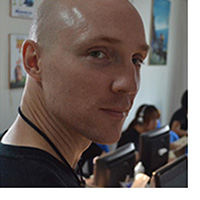
Brian Dowrick
Animation Director & VFX Supervisor| 动画导演兼视效总监
Brian Dowrick has twenty years animation experience, including twelve years with Rhythm & Hues and almost ten in China, during which time he has run his own training school and led animation departments for five studios in Beijing.
Brian Dowrick在动画行业已有20年的从业经验,曾在Rhythm & Hues工作过12年,而且在中国待过近10年,在此期间,他还开办了自己的培训学校,而且在北京担任五家工作室的动画部门负责人。
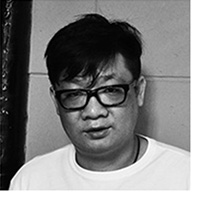 Chen Gang 陈刚
Chen Gang 陈刚
Founder & Director, Cgfish Beijing|Cgfish北京创始人、总监
Chen Gang is a VFX artist, director and producer with over ten years experience, entirely in the China market. He founded Cgfish in 2003.
陈刚既是一位视效艺术家,同时还是导演和制片人,在该领域有着十多年的经验,而且完全是在中国的市场领域。他于2003年创立了Cgfish公司.
Cgfish is a Beijing company founded in 2003, offering high-end animation and visual effects work for commercials, events and television.
Cgfish是一家北京公司,成立于2003年,专注做广告、活动和电视相关的高端动画和视觉特效。
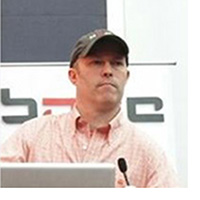 Chris Bremble
Chris Bremble
Founder & CEO, Base FX | Base FX创始人兼首席执行官
Chris Bremble founded BaseFX in 2006 in Beijing and has since guided the company to create visual effects for over 150 movies and television series from both Hollywood and China.
Chris Bremble自2003年起来到中国,并于2006年在北京创建BaseFX,此后,他带领公司为好莱坞和中国打造了150多部影视作品的视觉特效。
BaseFX is an award-winning high-end visual effects company with offices in Beijing, Wuxi and Xiamen serving the film, television and commercial industries, with 450 full time artists and staff. The company has struck up a strategic alliance with Hollywood visual effects company Industrial Light & Magic (ILM) and content agreements with Tencent.
BaseFX是一家高端特效公司,曾获得过多个奖项,在北京、无锡、厦门均设有办公室,总共有450名全职艺术家和员工,该公司专注于影视行业和广告行业。且已开始和好莱坞特效公司工业光魔搭建起战略联盟,而且已经和腾讯签订了内容协议。
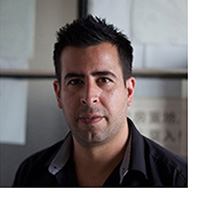 Steven Marolho
Steven Marolho
General Manager, MPC Shanghai | MPC上海总经理
Steven Marolho has been executive producing visual effects for over ten years, first coming to China in 2009 as EP for Smoke & Mirrors before joining Technicolor in 2012. He has been General Manager for MPC Shanghai since they opened for business in January 2015.
Steven Marolho十多年来一直担任视觉特效制作的高管,2009年他来到中国,最初担任的是Smoke & Mirrors的执行制片人,后于2012年加入特艺。自2015年1月MPC上海工作室创立以来,他便一直担任总经理。
MPC, a Technicolor company, has consistently won the highest industry awards for both their commercial and feature film work, having a hand in numerous household-name blockbusters. Headquartered in London, the company has facilities in ten locations worldwide, most recently opening a studio in Shanghai.
MPC隶属于特艺(Technicolor)集团,不论是在广告还是电影方面,这家公司一直都是行业内诸多最高奖项的得主,很多家喻户晓的大片都有MPC的参与。MPC总部位于伦敦,全球总共开设了十家公司,包括最近在上海新开设的工作室。
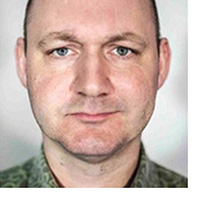 Marcus Roth
Marcus Roth
General Manager, Image Unit | Image Unit(上海)总经理
Marcus Roth has been managing VFX and visual production studios for over 25 years. He has over ten years experience in China, including four years as General Manager of Pixomondo Shanghai before co-founding Image Unit in 2013.
Marcus Roth有着超过25年的视觉特效和视觉制作工作室的管理经验。在中国也有着10多年的经验,其中有四年担任Pixomondo上海总经理,之后在2013年与人共同创立了Image Unit。
Image Unit focuses on visual design, high-end CGI and visualization located in Shanghai, serving clients in China and around the world. The company has just opened a facility in Stuttgart to serve their German clients.
Image Unit位于上海,专注于视觉设计、高端CGI和可视化业务,服务对象包括中国客户和全球客户。该公司近期又在德国斯图加特创立了工作室,从而可以为德国客户提供服务。
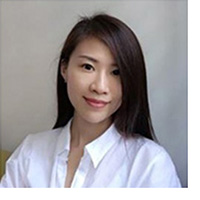 Amanda Wu
Amanda Wu
General Manager, Post Production Office (PO) | PO朝霆总经理
Amanda Wu is a Shanghai native with ten years experience in marketing and project management positions including four as General Manager of Post Production Office Group.
Amanda Wu是上海人,有着十年的市场营销和项目管理经验,其中有四年是担任PO朝霆集团的总经理。
Post Production Office (PO) is one of Asia’s largest and longest running postproduction companies offering CG, visual effects, offline and online editing through to color grading for commercials, television and film. Established in 2003 in Hong Kong, the company has since expanded to offices in Shanghai and Beijing, recently adding two more in Hangzhou and Taiwan.
PO朝霆专注于广告和影视CG、视觉特效、离线剪辑和在线剪辑以及调色。该公司于2003年在香港成立,后来又拓展到上海和北京,近期又在杭州和台湾开设了工作室。
 Billy Becket
Billy Becket
Managing Director & Executive Producer, Fin Design + Effects, Shanghai | Fin Design + Effects上海 总经理&执行制片人
Billy Becket has been the Managing Director of Fin Design + Effects Shanghai since the office opened in September, 2014. Originally from New York, Billy was a producer for some of San Francisco’s top ad agencies prior to joining the Fin’s Sydney team in 2005.
Fin Design + Effects上海办公室自2014年9月成立以来,Billy Becket就开始担任总经理。Billy来自于纽约,此前曾在几家旧金山的顶级广告机构担任制片人,后于2005年加入Fin Design + Effects悉尼公司。
Fin Design + Effects is a boutique design and VFX house based in Surry Hills, Sydney and Shanghai, China. Established in 2001, Fin is home to Australia’s most highly awarded, close-knit team of VFX artists, designers and producers.
Fin Design + Effects是一家精品设计及视效公司,在悉尼Surry Hills和上海均有办公室。该公司于2001年成立,很多在澳大利亚获得过最高奖项的视效师、设计师和制片人都在此任职,团队紧凑有致。
 Sam Khorshid
Sam Khorshid
VFX Supervisor & Creative Director, Phenom Films |天工异彩视效总监兼创意总监
Sam Khorshid has spent 15 years in the entertainment industry, including five in China, working in feature film, commercials, television, ride films and games. He has worked on such feature films as 2012, Alice in Wonderland, Iron man, and Kung Fu epic Flying swords of Dragon Gate Inn.
Sam Khorshid在娱乐产业已有15年的经验,其中还包括在中国工作的5年,他的业务领域包括电影广告、电视、动感电影和游戏。参与的影片包括《2012》、《爱丽斯梦游仙境》、《钢铁侠》,以及功夫片《龙门飞甲》。
 Wayne England
Wayne England
Creative Director, Ride Film & Commercials Director, VFX Supervisor & Producer, Phenom Films | 天工异彩创意总监、动感电影与广告总监、视效总监兼制片人
Wayne England is a CG and VFX artist with over 20 years industry experience, now serving as Creative Director, Ride Film & Commercials Director, VFX Supervisor and Producer for Phenom Films, moving between Beijing and Los Angeles.
Wayne England是一位CG和特效艺术家,已有20多年的从业经验,现任天工异彩的创意总监,同时还是动感电影与广告总监,视效总监兼制片人,他经常往返于北京和洛杉矶之间。
Phenom Films, based in both Beijing and Los Angeles, is the largest privately owned production company in China. The studio offers a complete start to finish post production solution including award winning VFX operations for major motion pictures, commercials and game cinematics. Phenom also specializes in stereo interactive ride films and immersive themed installations.
天工异彩在北京和洛杉矶均设有工作室,它是中国规模最大的私有制作公司。可以提供从头到尾的全套后期制作解决方案,该公司为很多大电影、广告和游戏电影艺术制作的多部视效作品都得过奖。立体交互式动感电影和沉浸式主题装置也同样是他们的专长领域。




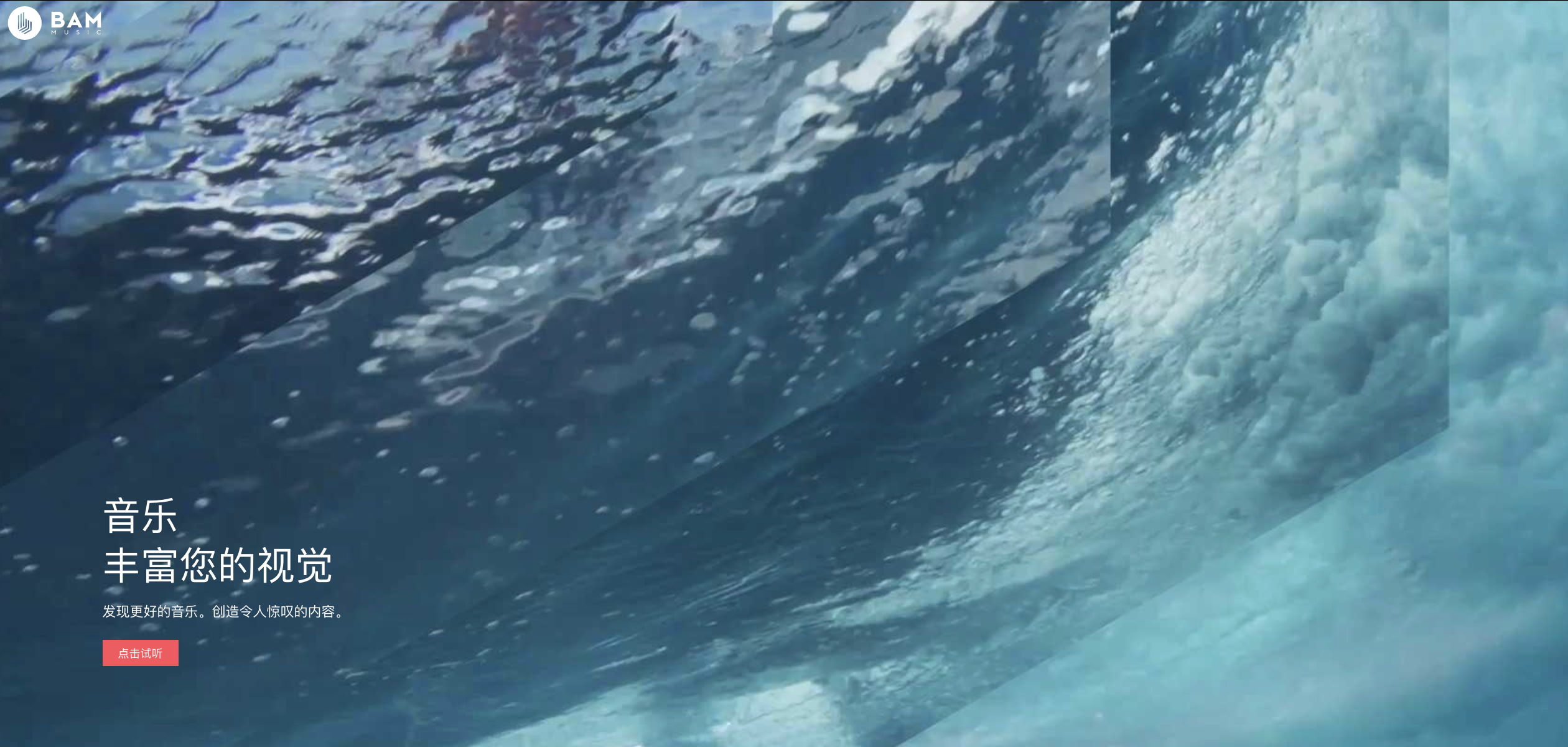 BAM Music Library Brings Edgy, Indie Sounds to Chinese Creatives
BAM Music Library Brings Edgy, Indie Sounds to Chinese Creatives
